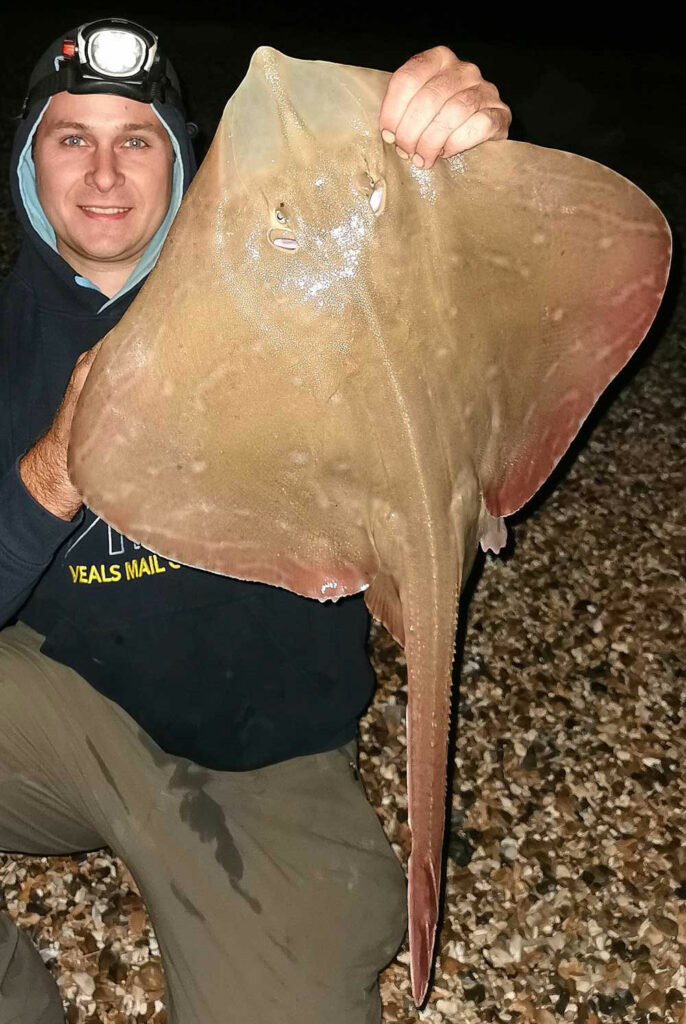By June, sandeels are well established in our inshore waters, and it’s the sandeel that encourage the small-eyed rays to follow them in. Small-eyed are mainly found in the western half of the English Channel, and the southwest and west of the UK as far north as Anglesey. In Ireland, they occur from Wicklow south through Wexford, Cork and into Kerry. In Ireland, they are called painted rays.
The average shore caught small eyed ray is from 3 to 7lbs, with a 10lb fish classed as a specimen in most angler’s eyes. They are also one of the better fighting rays.
Small Eyed Ray Season
The season, as mentioned, starts in June with numbers improving through July and August, but September to December would be the key period for both the bigger fish and the better numbers. The Bristol Channel can turn small eyed’s up pretty much throughout the year, but the period between January and April/early May is not noted for consistent results.
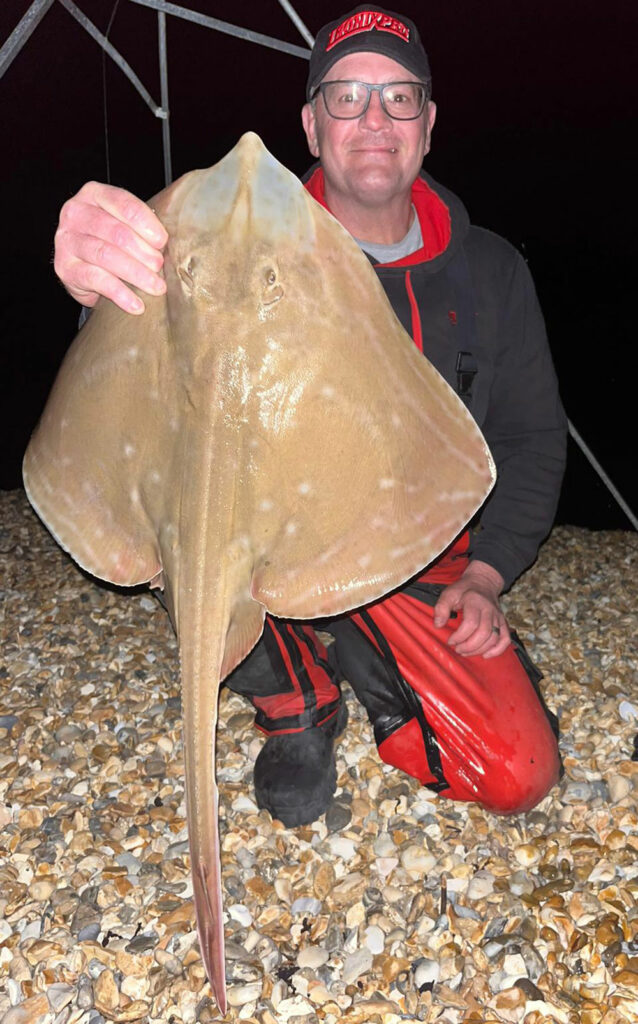
Habitat
This is a ray of varied habitats. They are found on the shallow western surf beaches over clean sand, but are also often found close to patches of rougher ground on this type of beach. Holding features will be the gutters that run parallel with the tide line at range, as well as seed mussel beds. They favour pushing in tight into the corners of surf beaches where cliffs and rocks border clean sand, and these are always good spots to fish.
Beaches that give on to reef ground will also hold small eyed as they like to set up home on little patches of cleaner ground among the rough, then move inshore with the flooding tide to feed in the surf.
It’s not really understood why, but small eyed rays are typically concentrated in relatively small geographical areas of just a mile or two, but either side of this area being classed as a rare catch. It’s likely to do with salinity levels and the availability of their preferred food source within that area.
When fishing beaches, take note where small freshwater streams cross the beach. Small eyed will often tend to congregate closer to these than in areas with no freshwater inflow. That said, they will not tolerate acidic flood water after heavy rain.
Weather and Tides
Small eyed rays buck the ray trend. Calmer conditions are OK, but a wind off the sea to say a force four is preferred. They will move in and work relatively light surf conditions in shallow water of just a foot or two of depth, even in daylight. However, their preference is for that moderate surf which really stirs the food out of the sand. They can surprise, too, by being caught in big seas occasionally, providing you’re casting to longer range.
They get caught in daylight if there is some slight colour in the water, and especially so when there is heavy cloud cover to subdue light passing into the water column. The best fishing is invariably at night.
The middle-sized tides right through to the biggest spring tides are the ones to fish. The smaller neap tides don’t have enough flow to pull the rays inshore. The Bristol Channel with its faster tides can still produce on smaller tides, but even here the bigger tides give the most consistency. If you fish at night, try to work a tide that floods in darkness. This will see the better numbers of small eyed within casting range.
They will start to push inshore as soon as the tide begins to flood, but the main period for bites are the middle three hours, with bites easing away towards slack water. These rays are astute and will drop back quickly to deeper water as the ebb starts to flow stronger. A long cast, though, can still pick up the odd ray as it makes its way seawards.
Tackle
Rods between 13 and 14ft with a rating of roughly 4 to 6oz are perfect, rods like the Competition Performance, Competition Naga, Xenon Power, Banzai Beach and Guerilla Surf MX are ideal for ray fishing. Couple these with a 6500 sized multiplier reel like the Banzai Tournament Mono Mag or Guerilla Mono Mag, loaded with 18lbs Tronixpro Blaze and a 60lb Xenon Leader.
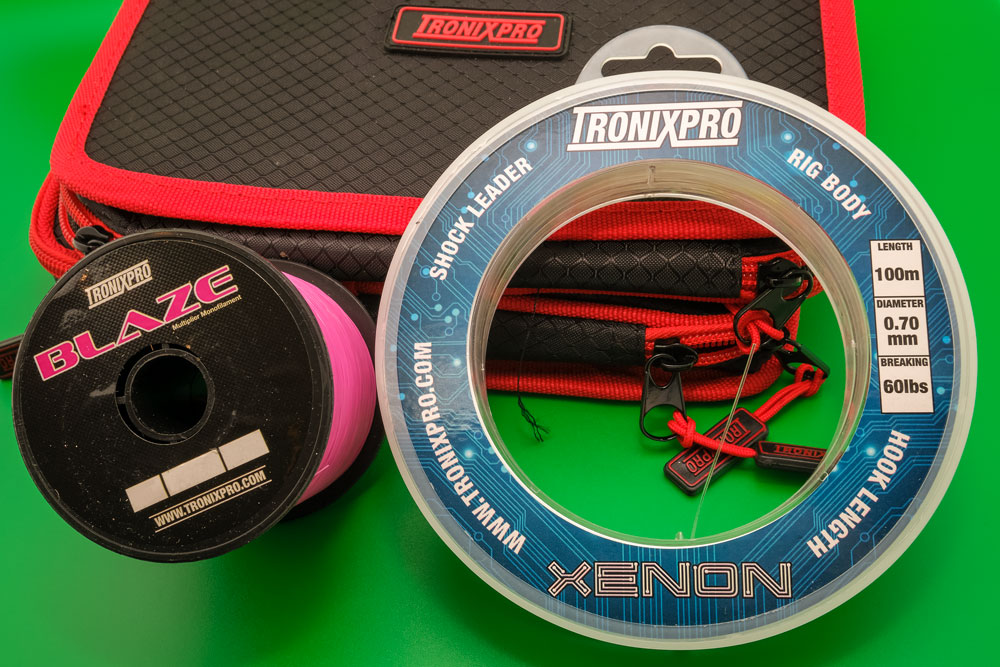
If you’re a fixed spool angler, the Competition Match GT, Xenon Zero, Xenon C-6 FX or Guerilla Surf FX are all capable of landing a decent sized ray. Couple these with an 8000 sized fixed spool such as the Xenon DV8 or Banzai Surf LC reels loaded with 30lb X8 Power Braid with a 80lb braided shock leader.
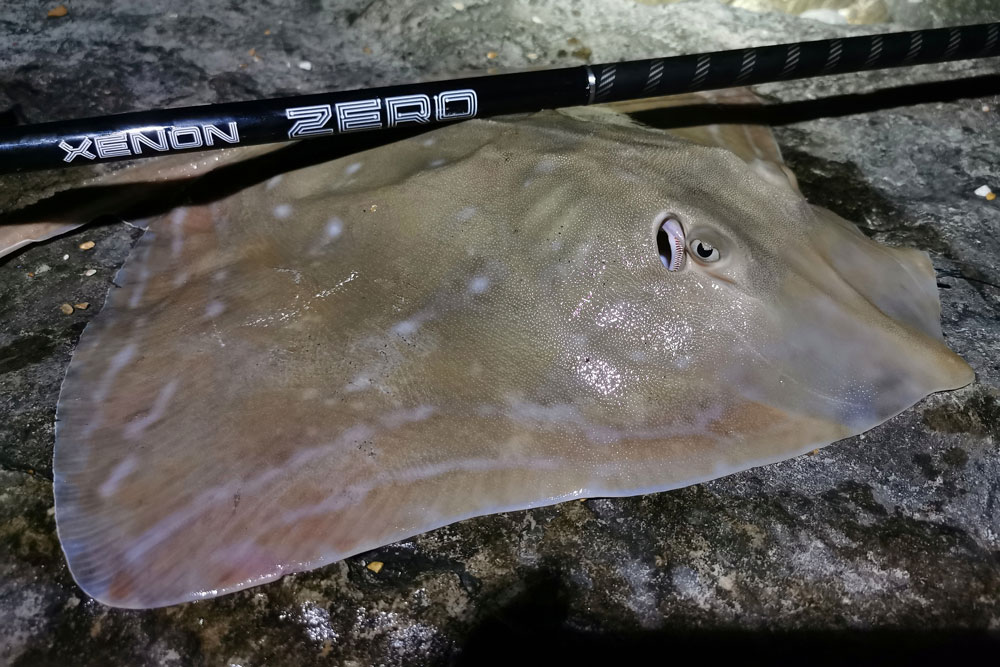
A pulley rig made from a 50-inch section of 60lb Xenon Leader is best for small eyed. Tie a Tronixpro Big Bait Casting Snap Link to one end. Slide on a 5mm bead, a Tronixpro Pulley Bead and another 5mm bead. Measuring up from the tag end of mono 22-inches, tie in a figure-of-eight knot for the beads to butt up to. On to the tag end of mono slide on a Tronixpro Rig Crimp, a 3mm bead, then an 8mm bead. Now tie on a size 2/0 to 4/0 Tronixpro Beast Uptide Hook. The crimp, 3mm bead and 8mm bead form the bait stop and this needs to be crimped in place about 2-inches above the hook. This stops the bait flying up the hook trace during the cast. Clip the hook in the wire hook of the Big Bait Casting Snap Link for casting.
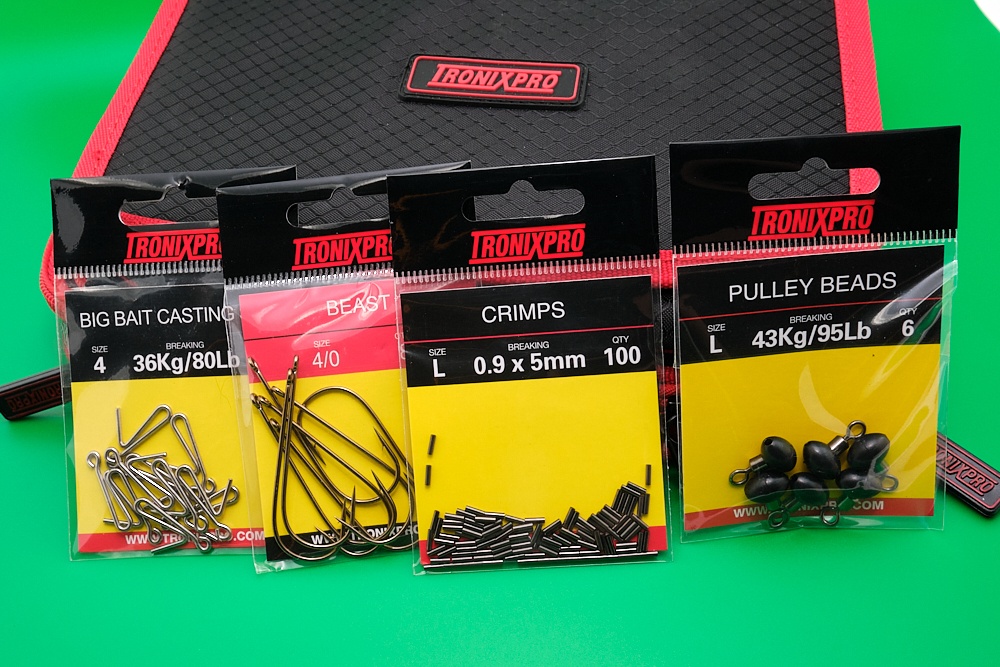
This ray likes an anchored bait it can chase down, so always fish release wired leads.
Baits
Sandeel is the natural bait for small eyed rays, which they naturally hunt in the surf. Cut the heads and tails off small sandeels and bind two or three bodies together, side by side, to the hook with bait elastic. Bigger sandeels can be used singly but cut the head and tail off and thread the hook in and out down the body from the tail to the head end to leave the hook point well clear, then bind with bait elastic. A tip with sandeel is to tip it with a small square section of mackerel at the hook point, and this can double its effectiveness.
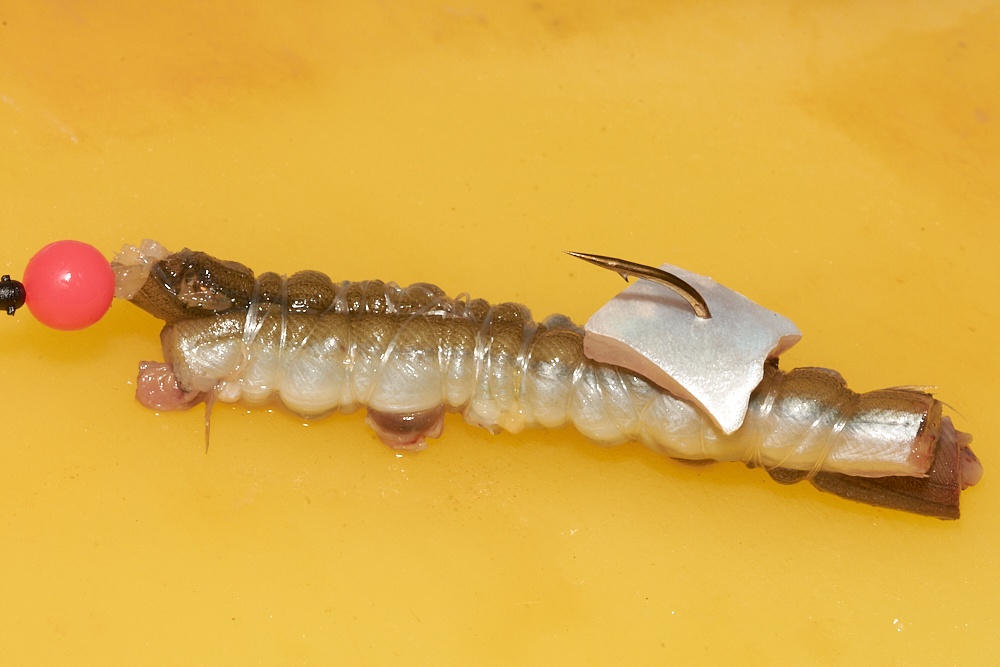
Squid is a good second choice and can be fished either as a whole very small squid or cut a larger squid into sections. Always cut the head and tentacles off the squid, as small eyed are adept at nipping these off but missing the hook. Fresh pouting fillets are a good bait for the bigger fish in the autumn. Mackerel as an individual bait is not always that effective for this ray and should only be used when other options have been exhausted.
Keep baits sensibly sized, for sandeel no more than 4-inches long, and squid about 3-inches. Sometimes, especially in shallow, calmer water, surf conditions, very small baits work better, and these need only be an inch or so and about a half-inch wide fished on small size 2 Aberdeen hooks.
Method
Try to fish two rods. One out at range and the other at medium range. The rays can travel quickly as the surf pushes in and by having two rods covering long and shorter distances you can quickly gauge where the bulk of the rays are moving, and this helps you maximise your catches. If you’re unsure, put one rod out at maximum range and one just 30yds out. If you’re not picking up any bites, it's usually a sign the rays are very tight inshore.
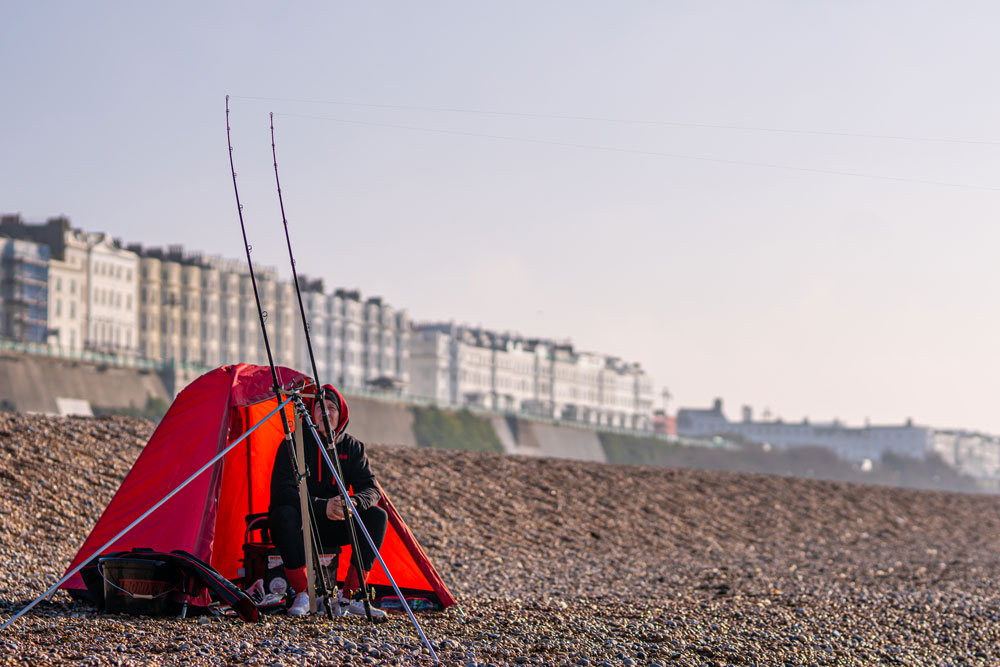
It's also worth having different baits on both rods. But make sure one has sandeel on, as it is the most likely to be taken.
Remembering where the gutters and rocky patches are and casting into and tight to these can make a big difference to your overall catch rate. Also look for seaward gaps in sandbanks that allow access to the gutters. The rays will move through these, and such access points are real hotspots.
Small eyed will hit a bait at speed when feeding in the surf. Keep your rod tips up a little and watch the tips carefully for a single pull down take that can drag the rod over. The other typical take is a full slack liner, this being a single knock on the rod tip and the tip falling straight with slack line between the tip and the sea. In all cases, grab the rod, wind in the slack line until you feel the fish, then let the weight of the fish and the rod tip pull the hook home.
This ray can scrap, and typically makes parallel runs along the surf tables. Play it with half a mind that if it wants to run, then let it. If it’s taking line, it’s tiring itself out.
The best way to land a ray in the surf is to go into the surf, grab the hook trace, then gently slide the ray in using the next available surf table.
Small eyed rays typically move into the surf as a spread-out group, so anticipate other fish to be caught when you get the first one.
